Woke up at 6:30. Our guide was not going to pick us up until 9 but I decided to take my morning walk around Thimphu. My other companions were still in la-la land. I peered out the window and the sky was a total gray like the day before. The morning air was quite cold, yet I still pursued my plan of walking to Trashi Chhoe Dzong near the northern end of the city.
Trashi Chhoe Dzong
This “walk” took nearly 30 minutes and entailed a distance of 2 to 3 kilometers each way. I passed by many curiosities – government buildings draped with ornate paintings, schoolchildren dressed in the national costume making their way to school, passers-by looking at me curiously… it was a mix of these as I observed the people around me starting their days. I arrived at the dzong, took some quick snaps, had a short conversation with a security guard, then turned back using another way. From the ground, Thimphu seemed much more compact than it looked when we viewed it from high up. There were lots of open spaces and natural greenery that weren’t so apparent previously. Thimphu is easily one of the most scenic capital cities in Asia.
Bhutanese archers
Midway during my walk back, a local Bhutanese student started a conversation with me. The usual “where are you from?,” “why did you come to Bhutan?,” and “do you like Bhutan?” She didn’t look accustomed to talking to foreigners and I wouldn’t be surprised if I was the first non-Indian foreigner she met. We chatted a little, and I was really surprised at how updated she was with popular culture – and that she was an active Facebook user (later, I was to learn that even our guide had Facebook). So Bhutan is not that isolated after all… at least not anymore.
Our guide was twenty minutes late, and I was a bit annoyed. He took us to an archery game right across the street and we watched for a few minutes. Archery is the national sport of Bhutan. It’s like what Basketball is to the US or Soccer to Brazil. I was amazed how good the archers could shoot at a particular target despite it being 100 to 150 meters away. Which reminds me, I barely saw any Bhutanese wearing glasses. But I digress.
dochula
Then came the three hour drive through winding roads and passes that were over 3,000 meters above sea level. We passed by the stupas in Dochula, which was built by the queen mother as a memorial. I was disappointed to encounter heavy fog there. On clear days, the Himalayas are supposed to be visible. It was also extremely cold up there, and I wouldn’t have been surprised if it snowed at any moment.
phallic symbols used as protection in Bhutan
After that were more winding roads – our van was probably averaging one turn every few seconds. But the fog cleared up as we headed to lower elevations. We passed by more breathtaking sceneries. I saw a lot of rice terraces which indicated that we were nearing Punakha – an important town in Bhutan and where we were staying for the night. Our guide took us to this scenic restaurant overlooking more rice terraces and a small village in the distance. To let us appreciate the view, we were all seated in a long rectangular table with everyone facing the window. Not a very sociable way of dining.
the wheel of life
We then walked through the fields and made a short climb to Chimi Lhakhang, a temple dedicated to the revered “Divine Madman” of Bhutan. Many of the houses we saw in this village had a painted phallic symbol on the walls. We were later told of its use as a protective symbol – something that was propagated by the “Divine Madman” himself.
Punakha Dzong – perhaps the most picturesque among Bhutan’s dzongs
Afterwards, we drove to Punakha to visit the highlight of the day – Punakha Dzong. “Dzongs” are basically medieval fortresses found all throughout Bhutan. Previously, these “dzongs” had a military purpose to drive away the Tibetan invaders. In modern times, these are used as administrative centers – equivalent to what many would regard as “city halls” or “provincial capitols” in other countries. Aside from being very picturesque, these government centers contain monks’ residences at the far end of the halls. These areas would also often be the most elaborately designed sections of the “dzongs.” The one in Punakha is perhaps the best of the four “dzongs” we visited in Bhutan. Its prayer hall facade is elaborately carved and detailed with Buddhist motifs.
at Punakha Dzong
I was particularly fascinated with the Bhutanese way of practicing Buddhism. The people practice a form of Buddhism called Tantric Buddhism which makes it distinct from other forms through to the use of rituals. More than other forms of Buddhism, there’s heavy emphasis on the connectivity of life – how each and every action affects others. That was probably the first time I heard the value of cooperation being stressed in a Buddhist context. It was quite a departure from my usual exposure to the religion. The form of Buddhism I normally encounter is the one that emphasizes the self (think: meditation, self-control, etc).
leaving Punakha Dzong
It was again an early evening. Before checking in to our hotel, our guide showed us this rickety suspension bridge which those with fear of heights may find thrilling. This time we were billeted at Zangto Pelri Hotel – probably not the best hotel in Punakha. But the view of the valley with the low-lying clouds was probably the best I have seen from a hotel room.
probably the best hotel room view ever









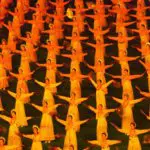
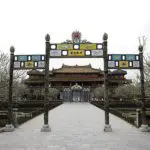
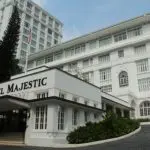
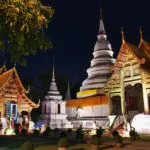

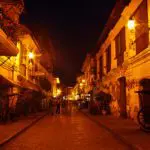
oh wow!!! bhutan!!! quick question, how’s the feeling because it’s high elevation so are you grasping for oxygen? this may sound silly, let’s just say i am not as physically fit as others.
thanks!
I didn’t have altitude sickness while I was there. Most of the major sights are at about 2000 to 2300 meters above sea level and only a few people get it at this altitude. The highest we went was 3,100 meters when we trekked, but it was still okay, just a little shortness of breath.